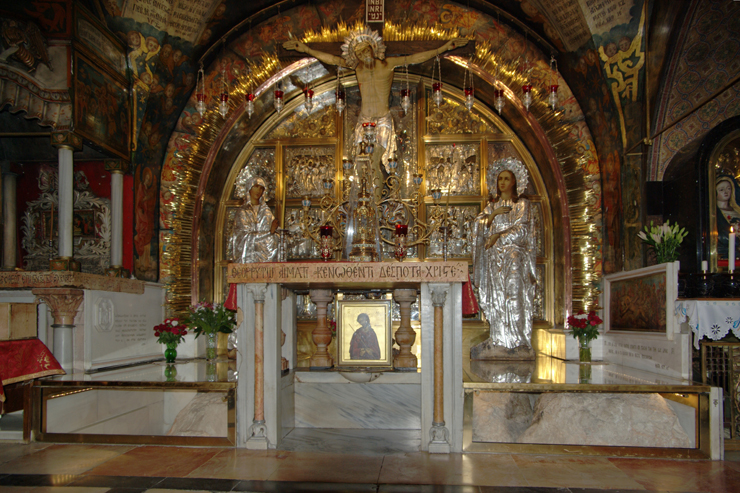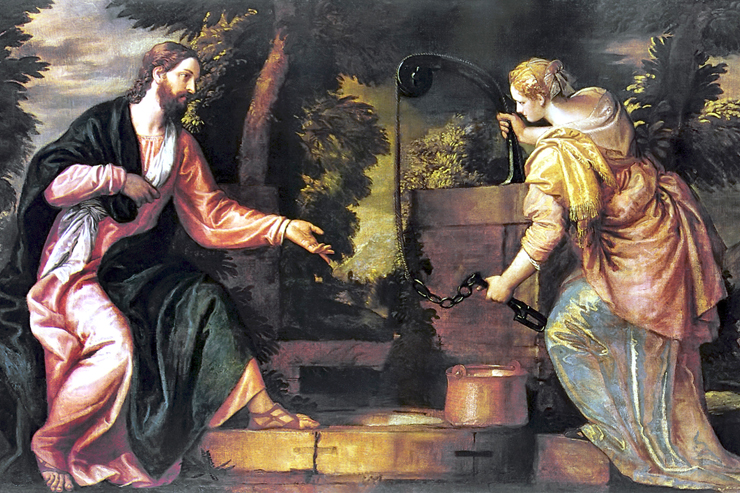
Photography by Andy Coan
The celebration of Catholic Schools Week in the United States is an annual opportunity to reflect on the privilege and purpose of Catholic education. Education is at the heart of the Church’s mission, a task set in motion by her Founder when he instructed his disciples to go into the whole world and teach the Gospel to every creature, educating others in what he had first taught them (Mt 28:18-20). Over the course of the last two millennia, this commission has taken on various organizational structures in response to historical circumstances as well as the maturation of the Church at the institutional level. The Church’s faithful following of this divine imperative led to the establishment of the first universities deriving from the Medieval cathedral schools and the first widespread attempts to provide an education to those who had previously been excluded, from the poor, to orphans, to girls, to people in missionary lands where no formal schooling had ever existed.
More than in any other country in Church history, this great educational mission has flourished in the United States, where an enormous network of Catholic learning institutions developed at all levels. Today there are over 6,000 Catholic elementary schools, 1,100 secondary schools, and over 200 colleges and universities. Even though American Catholics comprise only six percent of the global Catholic population, the United States has thirteen percent of the Catholic institutions of higher learning throughout the globe. This is an incredibly rich legacy and an impressive foundation for the continued diffusion of the mission entrusted by Christ to the Church.
The perennial challenge for Catholic educational institutions, however, is to remain faithful to the mission they’ve received. Just as individual Catholics can lose their way, so can Catholic institutions when those who lead them begin to separate themselves and their entities, formally or informally, from the institutional Church, her living faith and moral way of life.
This has happened — in some places, ubiquitously and perhaps without adequate reflection — when Catholic educational institutions began professing that they follow “Catholic values” rather than the Catholic faith. When Catholic schools use such an expression, administrators generally have some values in mind — like the obvious good of Christian service — but generally not all truly Catholic values. The Church has never published a list of “Catholic values” — which means that using the expression is inherently subjective and partial — but if she did, it would necessarily include the irreplaceable value of the hierarchical Church founded by Christ, the obedience of faith, the reception of the sacraments, and the living the fullness of the Church’s moral teaching, things that such Catholic institutions might not stress as much as they do service. The term “Catholic values” already implies an intentional separation from the Church, by promoting certain “values” instead of affirming the whole of the faith. An American ambassador in a foreign country, for example, would never declare that the goal of his embassy was to represent merely “American values,” however he subjectively determined them; his mission would always be, rather, to represent the American government and nation that embodies those values. Likewise, it’s not enough for a Catholic institution to be inspired by “Catholic values.” Like embassies, Catholic schools must authentically represent the Church, her mission, and the fullness of the Catholic faith they advertise.
A second level of separation — again, quite common — came when various Catholic educational entities began to declare that they are inspired, not by the Catholic faith, but by the “tradition” of the particular religious order that founded them. Such an expression generally gave a nod to the past while intentionally distinguishing itself from itself from the institutional Church. But in most cases, they were also separating themselves from their genuine foundational charisms: many of the founders of these religious orders were absolutely explicit about their order’s union with the entirety of the Catholic faith; therefore, in order to be truly in the “tradition” of such an order, the institutions today should be as fully and unabashedly Catholic and united to the institutional Church as their founders were. The result has been that such institutions are in a situation of a double-infidelity: to the mission they have within the Church as well as to the authentic charism bequeathed by their religious founder. That infidelity needs to be repaired.
The third and most serious level of separation happened when Catholic institutions sought to declare their independence from the institutional Church. For many Catholic universities and colleges in the United States, this happened in 1967 with the infamous Land O Lakes Declaration. Various Catholic university presidents signed a statement of principles that said “to perform its teaching and research functions effectively, the Catholic university must have a true autonomy and academic freedom in the face of authority of whatever kind, lay or clerical, external to the academic community itself.” To be Catholic in other words, they claimed that their institution had to be free of the authority of the Catholic Church and every other authority. In terms of the education of students, the signatories declared that there should be “no theological or philosophical imperialism, … no boundaries and no barriers, … no outlawed books or subjects.” By deduction, the truth, even taught by the faith or discovered by reason, wouldn’t be a guide or boundary; pornography wouldn’t even be outlawed. Lastly, they rejected any and all accountability to the Church’s hierarchy, asserting rather that Catholic universities, instead of being evaluated, should be the evaluators of the entire Church. The universities, they wrote, should “carry on a continual examination of all aspects and all activities of the Church and should objectively evaluate them.” Many Catholic institutions of higher learning, led by these conductors, went off the rails.
In 1990, Pope John Paul II began the process to try to save these Catholic educational institutions that had lost their way. He published an Apostolic Constitution, Ex Corde Ecclesiae (“From the Heart of the Church”) that observers on all sides recognized was an attempt to respond to, remedy and redeem the damage being done by the philosophy of the Land O Lakes declaration. The pope called on Catholic universities to consecrate themselves “without reserve to the cause of truth” and challenged them to focus on being truly “universities” and truly “Catholic,” forcefully reminding them how those are not contradictory but harmonious terms. In this “magna carta” for Catholic universities, he said that a Catholic university must have four essential characteristics: it must have a Christian inspiration both among individuals and the institution; reflect on all aspects of knowledge from the perspective of the Catholic faith; be faithful to the Christian message in conformity with the magisterium of the Church; and be institutionally committed to the service of the Church and all people. John Paul II said, “One consequence of its essential relationship to the Church is that the institutional fidelity of the university community includes a recognition of and adherence to the teaching authority of the Church in matters of faith and morals.” If an institution declares itself autonomous from the institution of the Church and her teachings, in other words, then it is simply no longer genuinely Catholic.
In 2001, the U.S. Bishops published a series of particular norms applying Ex Corde Ecclesiae to Catholic colleges and universities in the United States. It said that Catholic institutions needed to incorporate the principles and norms as far as possible into their own statutes, mission statements, procedures and way of life. In 2006 and 2011, it continued, there would be a means for joint assessment by the universities and the bishops to determine how that implementation is going. The process of the ten-year review has just begun.
Almost all educational institutions, Catholic and otherwise, regularly undergo accreditation processes to ensure that they are living up to universally agreed upon standards, and this joint assessment of the implementation of the norms of Ex Corde Ecclesiae is a much needed Catholic accreditation process. Some Catholic colleges and universities will pass with flying colors. Others will have much work to do. But the outcome of the process will have consequences beyond an institution’s Catholic identity: it may also have financial ramifications, as we saw in the controversial January 11 decision of the National Labor Relations Board that Manhattan College in New York could not be considered Catholic for religious freedom purposes in a labor dispute. The NLRB claimed — in a ruling that the College is appealing — that it could find nothing distinctively religious in Manhattan College’s governance, faculty, mission statement, curriculum, and promotional literature. It added that the College’s claim of institutional autonomy from the Church actually separated it from the Church’s religious freedom protections. Such tendentious rulings and intrusions by government agencies may give extra motivation to Catholic educational institutions that have not been fully in compliance with the expectations of Ex Corde Ecclesiae, to strengthen their Catholic identity, return to their roots and fully assume the heart of the Church’s saving mission.













